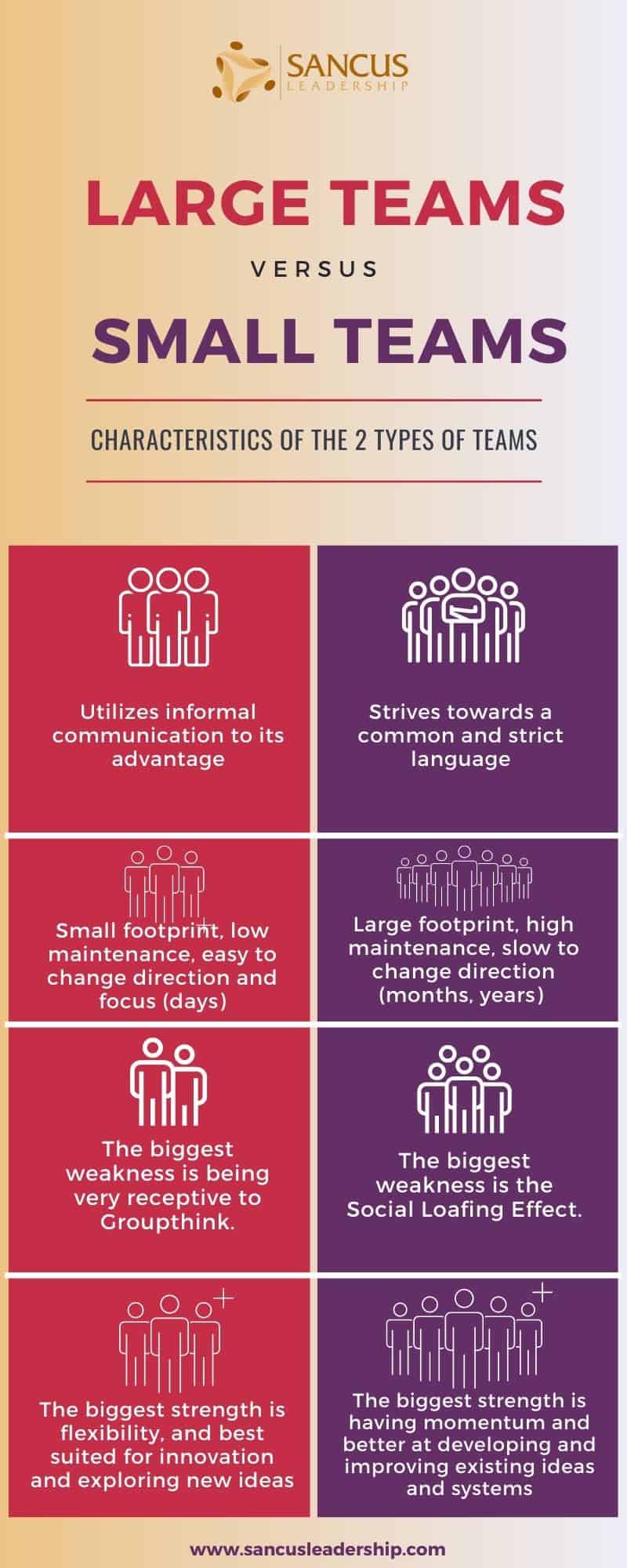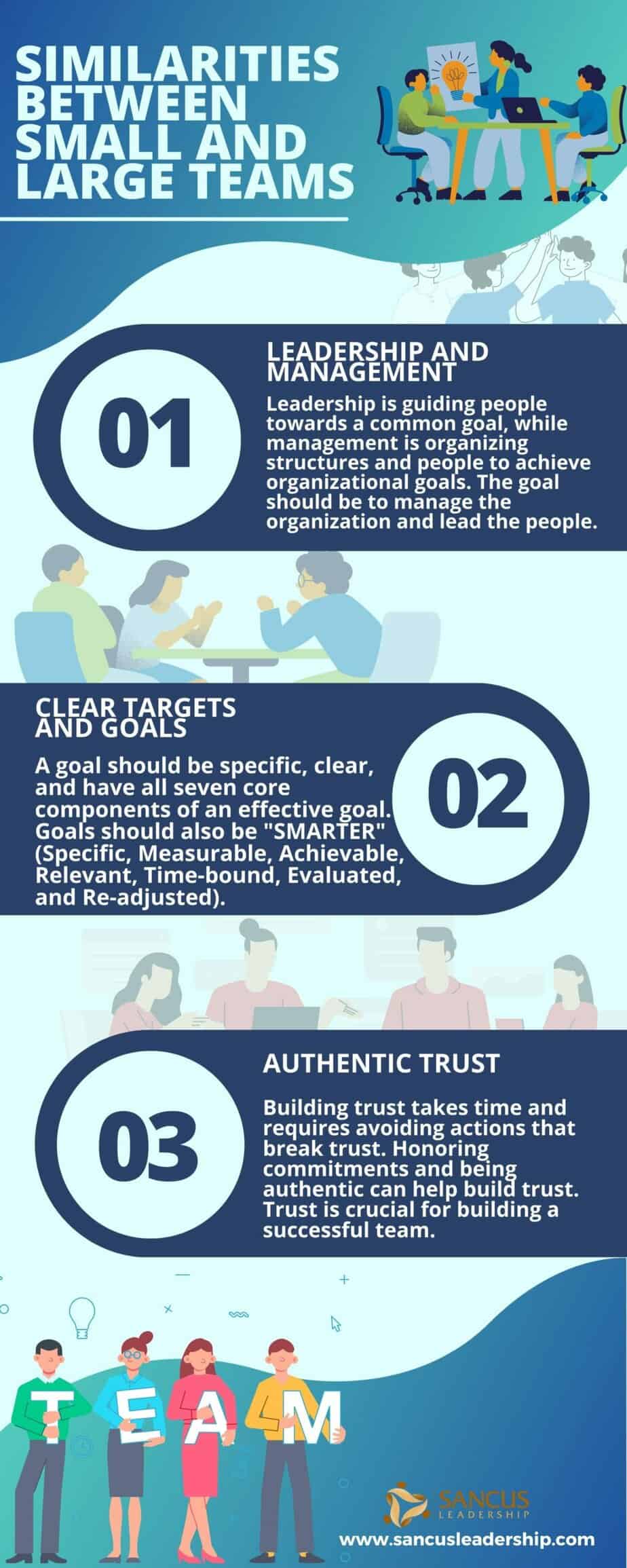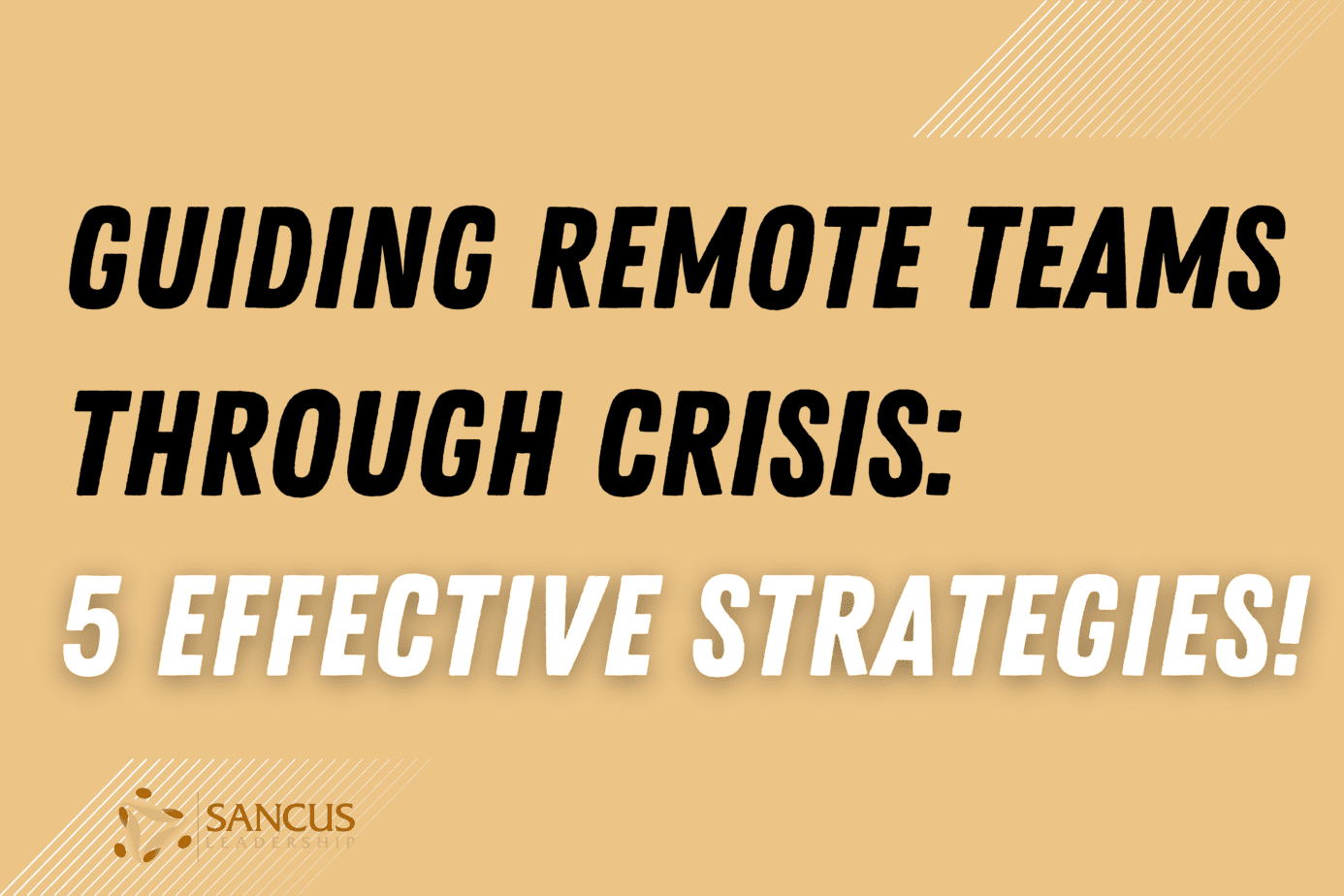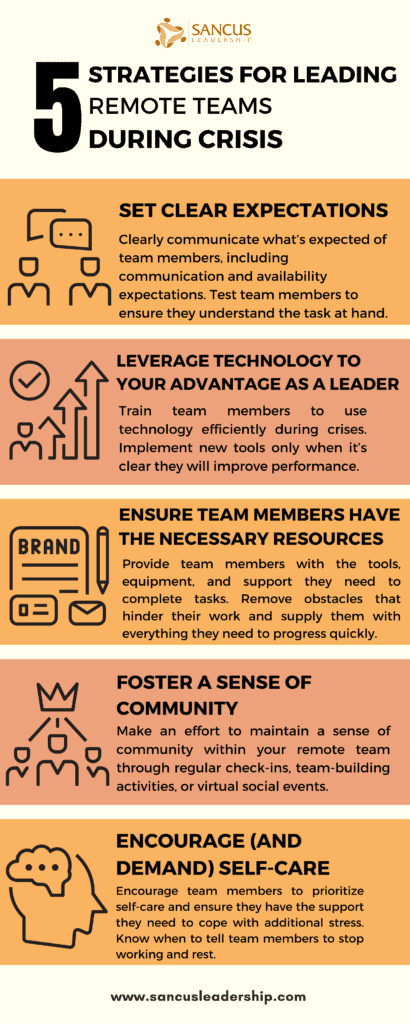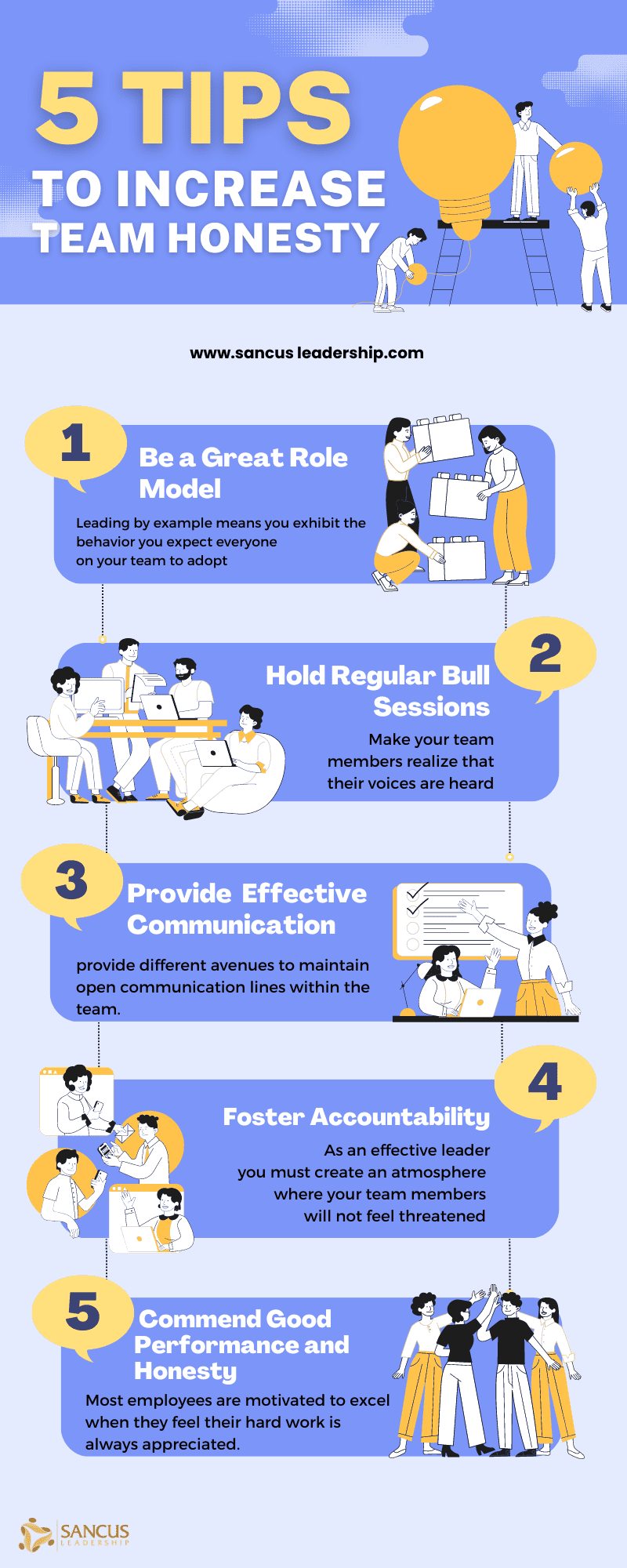Leadership is a crucial component of any business, but it becomes even more critical in times of crisis and change. Whether managing a small team of 2-10 people or a larger organization, the ability to adapt and lead effectively during these times can make all the difference.
The main difference between leadership in routine and crisis is the level of uncertainty and the need for quick decision-making in emergencies. Routine leadership involves established systems and processes, while crisis leadership requires adaptability and decisiveness in the face of uncertainty.
I have spent more than twelve years in leadership positions, most of which have been in high-paced and constantly changing military situations. But a big chunk of the time was routine; you might have heard the saying “hurry up and wait”; this pause in tempo is where leaders need to focus on processes and routines.
Not everyone can adapt to two so different types of leadership styles. Still, hopefully, after reading this post, you’ll have a better sense of how you can improve and adapt your leadership to effectively lead a team in routine and crises.
What Is Leadership in Times of Crisis?
Leadership in times of crisis is about adapting and making quick, decisive decisions in the face of uncertainty. In a crisis, it’s better to make a decent decision in time than a perfect decision too late.
In a crisis, it’s better to make a decent decision in time than a perfect decision too late.
But on the other hand, small teams that are well-equipped and well-led can change direction and adapt much faster than a larger and equally equipped team.
Adversity is actually how real teams are built; they are forged through challenging situations, something I have dedicated a large part of my career to understanding and building tools for.
You can understand why forging teams work and why team building doesn’t work here.
A leader’s ability to communicate effectively with their team is critical in times of crisis. Being clear, concise, and transparent while also being empathetic and understanding of your team members’ concerns and needs is crucial.
Keeping morale high and building trust within the team starts with being a supportive and caring leader.
Leading in a crisis also requires staying calm under pressure. It’s critical to acknowledge the gravity of the situation and the challenges that come with it – not to pretend everything’s fine when it isn’t. But by maintaining a level head, you can help keep the team focused and prevent panic or chaos.
When I speak with business leaders, the biggest difference in leadership culture that I see is that in the army, we focus 80% on leadership situations characterized by chaos and uncertainty. The other 20% is dedicated to routine.
In the business world, the numbers seem to be the opposite; a very small percentage of effort is directed toward the most difficult and most threatening situations. Even though most businesses will have to endure a crisis within five years.
I believe this is one of the big unspoken issues of the business world, and it leads to more difficulties and suffering than necessary.
Why Is Leadership Agility in Times of Crisis and Change Important?
In times of crisis and change, agility in leadership is essential to adapting to new situations and pivoting as needed, and fast.
Being proactive rather than reactive is one of the key benefits of agile leadership. Staying on top of developments and being prepared to make quick decisions can help minimize the impact of a crisis or change on your team.
A major player in the “proactive game” is contingency planning; the plan never survives first contact with the enemy. Knowing this, we must put a lot of effort into understanding possible situational developments and connecting them with easy-to-understand and remembered action plans.
A major player in the “proactive game” is contingency planning; the plan never survives first contact with the enemy.
During my time in the bomb disposal teams, I created and executed on thousands of contingency plans, I know how they work, and I stand ready to teach you what I have learned through experience; when you are ready, book a free leadership call with me here!
Additionally, agile leadership can foster innovation and creativity in your team and assist you in navigating challenging situations.
Building your team to anticipate change rather than react to it is one of the key benefits of agile leadership.
To overcome new challenges, your team may have to think creatively and come up with novel solutions to old problems.
I remember when the second in command on my EOD (bomb disposal) team solved a ten-year-old problem: loading and unloading the robot out of our team vehicle. It used to be a manual lift with a risk of back injury.
But he solved the problem by adding a few tackles and ropes like he used to do rock climbing. He was able to think differently, to look at the problem and draw on experiences from other aspects of his life, something that would prove invaluable on our many deployments together.
This all makes sense on paper, but if you can’t communicate this properly to your people, you are no better off than before.
The Role of Communication in Crisis Leadership
Leadership requires effective communication in any situation, but it becomes even more crucial during crises. When team members face uncertainty and stress, clear and transparent communication will help reduce anxiety, build trust, and get tasks completed fast.
When facing a crisis, leaders can use several key communication strategies:
Be transparent: It’s essential to be open and honest about the challenges and uncertainties that your team is facing. This means being upfront about any difficult decisions that need to be made and explaining the reasoning behind them.
Don’t mistake this for dumping information on your team; you must be a “crap filter” so they don’t have to deal with all the unnecessary information.
The trick is getting the balance correct; too little, and you might appear as "hiding" information; too much, and you'll have people worrying about things that will never impact them.
Keep the lines of communication open: Make sure to check in regularly with your team members and encourage straightforward and quick delivery of their message; there is no time to waste on issues that are not in imminent need of fixing.
Open up emergency channels for communication; this should be an encrypted service (like the Signal app) only allowing essential information to be passed.
Anxiety is usually driven by a fear of the unknown; this means that the leader’s focus should be to enable information to move where it needs to go.
Use fast language: When communicating during crises, it’s essential to be as clear and concise as possible to allow the speed of information; the most difficult part of combat is understanding the situation, the one who has the most accurate and timely information usually wins.
Your best tool here is to ask your team to repeat what you have said and then make sure you ask questions so you KNOW that they have understood what’s going on.
Be empathetic: Crises can be challenging for everyone; this is not the time to add extra stress onto your people; encourage people to do only what is vital and take the rest of the time off; recovery and sleep allow for good decisions and fewer redos.
Remember that REAL care is taking care of the problem that your team is facing, not just having discussions about their feelings.
Do what you belive is good for your team in the long run, not what will make them give you a high five today.
Decision-Making in Crisis Situations
One of the critical challenges of leadership in crises is the need to make fast and decisive decisions, often with limited information and with high risks.
Leaders can use these strategies to make effective decisions during crises:
Control for decision-making traps: There are several common decision-making traps that leaders can fall into during crises, such as overconfidence, groupthink, and anchoring bias. Leaders can improve their decision-making skills by being aware of these traps and taking steps to avoid them. These are all described in my favorite book, Thinking Fast and Slow, by Daniel Kahneman.
Gather as much information as possible: You have probably heard that you should “gather as much information as possible” what I have noticed with leaders that take this approach is that they tend never to stop looking for information, and often their decisions come too late.
Decisions that are perfect but too late are worse than a semi-good decision on time.
Instead, learn how much information is enough to move on with the task. What exactly do you need (not what you want) to know before you can make a decision,
This may involve seeking input from team members, consulting with experts, or examining data and research.
Be flexible and open to new ideas: Crises often require leaders to think outside the box and develop creative solutions. This means being open to new ideas and approaches and pivoting as needed.
Remember that 99 out of 100 new ideas are really bad, but you only need one great idea to make up for all the bad ones. For every Google (a great idea), there’s a million Swosh (bad ideas).
Make a decision and move forward: While it’s essential to gather as much information as possible, there may come a point where you need to make a decision even if you don’t have all the information you’d like. It’s essential to be decisive and take action while also being prepared to adapt as new information becomes available.
With action comes clarity! Move forward and see what you can learn!
With action comes clarity! Move forward and see what you can learn!
Consider the long-term implications: Focusing solely on short-term solutions can be easy in a crisis. However, it’s essential to consider the long-term consequences of your decisions and how they may impact the team or organization in the future.
In the primary phase of the crisis, it’s vital to get out of the so-called “kill zone”; if you stay here, your business will fail. This is where your crisis management plan comes in handy; there’s little time to think and be innovative.
In the primary phase of the crisis, it’s vital to get out of the so-called “kill zone”; if you stay here, your business will fail.
In the primary phase, the focus is short-term gains and avoiding significant losses.
In the secondary phase, the tempo is slower, and we have taken our business out of the kill zone but not out of danger; now, it’s time to assess the situation and understand the threat. We start preparing for how our next action will impact the organization in the long run.
In the secondary phase, the tempo is slower, and we have taken our business out of the kill zone but not out of danger; now, it’s time to assess the situation and understand the threat.
Involve the right people: The right people can contribute various perspectives and ideas to decision-making. Include team members who have expertise in specific areas or may be affected by the decision. By doing so, you can make sure that your decision is well-informed and well-supported.
In the primary phase, you want people who can quickly understand what needs to be done on a deeper level.
Usually, this is someone who has been with the company for a long time or who you trust and communicate well with.
In the secondary phase, you should look for the “thinkers,” those who excel at analyzing and who can sit down and structurally assess what has happened.
Most of the time, we don’t get to change the people on the team because of the situation; I prefer not to anyways, so instead, we need to encourage specific behaviors suitable for that situation.
You should train your team to understand that when you say GO, there is no time for questions, but as soon as things calm down, you are their most loyal listener.
What Is Leadership in Routine?
Some people put their leaders on a pedestal, seeing them as someone who tells everyone else what to do and how to do it. In reality, a true leader is someone who is with the team, consistently steering it toward a common goal. They do so unrelentingly and always with the bigger picture in mind. True leaders ensure that each team member is up to speed on where the team is and where it is headed.
Leadership in routine is crucial to the success of any business. After all, the team can move closer toward the goals in the day-to-day, seemingly mundane tasks. It is up to the leader to ensure that each team member does their share and contributes what is expected of them.
Here are some vital aspects that an effective leader must prioritize when it comes to routinely managing a team:
Focus On Business Operations and Processes
Business operations include all the daily tasks and processes involved in making a business run efficiently. It may include any of the following:
- Formulation of marketing strategies
- Sales monitoring
- Web development
- Inventory updates
- Client appointments
- Industry updates
- Order tracking
- Brainstorming/team meetings
Notice that most of these tasks are repetitive and almost monotonous. However, these are necessary to ensure the business works like a well-oiled machine. As a leader, it is part of your job to manage all these aspects of business operations and ensure that each task is accomplished efficiently and on time.
One of the key benefits of strong Standard Operating Procedures is that they consume very few resources to follow and implement. A good SOP or routine should reduce the number of decisions and wasted time and allow for a transfer of tasks between employees if needed.
This will, in return, mean a lower workload, a higher degree of goal accomplishment, and free up brain computing power for complex tasks.
Find Ways To Make Tasks Easier
Gone are the days of tedious 10-page reports and blurry graphs printed on scratchy bond papers. These days, effectively leading and managing a team calls for your ability and willingness to make things easier for each member so that tasks are accomplished systematically and cost-efficient ways.
This is where the beauty and convenience of technology come in. Nowadays, automation is key to ensuring that business processes, from the mundane to the extraordinary, are carried out swiftly and concisely. Automation can help you streamline business operations to make things simpler for the whole team.
I personally use Zapier (which I think is somewhat expensive and buggy) to sync my google sheets with Monday.com. I also use it to create tasks from my morning journal; when I fill in my three most important tasks for the day, it automagically sends it to google tasks!

Be In Touch With the Team
Regular briefing sessions keep each team member posted on new information and where the rest of the team is accomplishing tasks and goals. These will also help you keep tabs on your team members’ work and whether or not they need assistance from you.
One-on-one talks are my preferred way of improving productivity and boosting employee morale. Take these short hangouts as a chance to let your team members know why their unique tasks are crucial to the business’s success.
You can also take this opportunity to give them feedback on how they’re doing and what aspects you would like them to improve on. Asking them to assess your performance as a leader will also be impactful in reiterating that you are all part of one team.
Ensure that you don’t mix positive and negative feedback in the same session. As humans, we are predisposed to react more strongly to danger and threats; this means we will focus more intensely on negative feedback, and the positive tends to be forgotten or discarded.
But instead, offer positive and negative feedback in temporally different situations.
How Does Routine Leadership Compare to Crisis Leadership?
Crisis leadership requires creativity, strategy, and dynamism. As opposed to routine leadership, effective and reliable crisis leaders must be able to think on their feet, make quick and sound decisions, and execute their plans of action efficiently.
Crises are part and parcel of any business’ lifespan. You must always lead your team onward, whether it’s a natural disaster, product recall, or employee-related skirmishes.
The goal of crisis leadership is to respond quickly to unforeseen challenges and to minimize losses. As a leader, you must be viewed by the team as a strong guiding force and source of support. Another objective is to ensure that these crises will no longer occur in the future. If not completely avoidable, you must be able to devise tactics for better crisis management in the future.
Essentially, your crisis leadership strategies can make or break the business while it traverses through uncharted territory.
On the other hand, routine leadership relies heavily on predictability. Day-to-day tasks are anticipated, yet essential to the development and security of the business. The goal of this type of leadership is to ensure that all aspects are running smoothly and functioning synergistically.
Building Resilience in Teams
Crises are complex, and leaders must help their teams stay solid and resilient. Resilience is defined as:
The capacity to withstand or to recover quickly from difficulties; toughness.
Oxford languages
Teams lacking in resilience tend to complain more, have less Intrateam trust, and focus more on themselves than on the team and the mission during the crisis.
Resilient teams are better able to handle challenges, adapt to change, and are more likely to bounce back after a crisis.
In other words, resilient teams understand that failure is inevitable. They anticipate it, learn from it and recover faster.
7 Strategies to increase resilience in your team
1. Foster a culture of support
Make sure team members feel supported and valued, and encourage open communication and collaboration.
The keyword here is feel; it doesn’t matter how much time and energy you spend creating a culture of support if nobody actually feels supported.
The number one tip I give to leaders trying to build a culture of support is to support them when it really matters, specifically when you don’t feel like it.
We are what we do, not what we say.
Here’s a great example of a culture of support
It wasn’t uncommon on my EOD teams that you would help the family of a deployed team with things unrelated to work. Such as helping to move or picking up kids at the kindergarten.
This wasn’t done to have the favor returned later, but rather from a sense of “you help out when you can” perspective.
We are what we do, not what we say.
2. Train your people in self-care
Considering the situation of the workplace right now, with employees scoring low in engagement and low in mental and physical health, it’s evident to me that self-care isn’t an innate function delivered to us at birth.
Instead, it is something we need to train ourselves and our team. Caring for yourself allows you to perform at a higher level over the long run. There may be a loss of productivity in the short term, but if your goal is to reach targets, that take years to hit.
… you need employees that perform with an average high, not just spikes in performance …
Then you need employees that perform with an average high, not just spikes in performance and then drops because of lack of motivation or health issues.
I’ve spent five years developing a framework that allows teams to find the balance between performance and recovery; this allowed me to retain my team for multiple deployments, something that had never happened before at my unit.
You can contact me here for more information and if you want to work together.
3. Foster a growth mindset
I see a lot of managers who think that their employees should stay within the “rules” and only do their job, be king of the process, but don’t challenge it.
I think this is one of the worst ways you can handle your primary resource (humans); the problem is that even if you do everything you can to make the process streamlined and stable, the world keeps moving.
New technology disrupts, your employees start families, and a pandemic hits; I think you get the point.
New technology disrupts, your employees start families, and a pandemic hits, I think you get the point.
If you don’t encourage your team to grow and continuously explore new ways, you’ll quickly struggle with low performance and morale.
This happened to me during my time on the bomb disposal teams, I remember we found out that there was a new and improved camera that could be fitted to our robot, but we weren’t allowed to use it due to red tape.
Suddenly the team was struggling with accepting the inherent risks of the job, “why aren’t we given the best possible resources to do a good job” I remember a colleague saying.
Fortunately, I had an excellent commander who gave us the thumbs up to build our own camera; this vastly improved our capabilities and allowed us to feel like we were in charge of our capacity building.
The lesson was simple (not easy): encourage team members to view challenges as opportunities for growth and help them to develop skills and strategies for handling difficult situations.
4. Build REAL teamwork
Since resilience is the ability to get back up after being beaten down, it sure makes a lot of sense to have someone reach out with a helping hand to get you back on your feet.
This is why teamwork, real teamwork, is so essential; there are a lot of teams out there that are mainly a gathering of people and unworthy of the title Team. A true team will help each other when there is a need.
But to make people work as a real team, you, as the leader, need to show them how this benefits them.
Having your team find out why they are important to each other is the first step to building a solid team.
This is complex but can be done with proper team creation strategies; at Sancus Leadership, our experiences tell us that forging unbreakable trust is the most effective way of creating high-performing teams. Reach out to us when you are interested in working together.
Strong teamwork and collaboration can help to build resilience within teams, so encourage team members to work together and support one another.
5. Reinforce the behavior you want more of
In the military, there is an idea that giving someone too much praise devalues its significance. That is to say, the impact of positive feedback is reduced the more often you speak it. This has led to military leaders cutting back on praise. I believe this to be completely wrong.
… the impact of positive feedback is reduced the more often you speak it.
We have all met leaders who throw around the words “great job.” At first, it feels nice to hear, but then you realize that they use it 100 times per day. In some sense, we all know this to be accurate; if everything is amazing, nothing is amazing.
Many leaders draw the wrong conclusion from this (as with the military example). The right way is not to stop telling people when they are doing a great job.
Stop giving positive feedback means that many of your employees will struggle with understanding what aspects of their contributions to keep and what to improve.
How will they then know what aspects of their work benefit the company?
The solution is simple yet very difficult. You need to be Ultra specific; if you tell someone, “great job,” you are actually saying, “something that you have done was good.” Not very specific and definitely not useful.
Instead, there is power in, “the report you sent today was on time, in line with company procedures, and your conclusion was easy to understand. The report made it easy for me to argue why we should invest in new equipment.”
It is ultra-specific on what actions were appreciated and clarifies precisely what impact their job had on the business.
It is ultra-specific on what actions were appreciated, and it clarifies exactly what impact their job had on the business.
It’s essential to recognize and celebrate small wins and progress, as this will help to build morale and resilience within the team.
6. Honest and transparent communication
One premise needs to be fulfilled for the strategies mentioned above to work effectively, honest and transparent communication.
You have probably encountered people who say, “sure, ill help out,” but somehow you can feel or intuitively notice that they are opposing but still accepting.
This is called passive behavior, and it is something to watch out for in the workplace; if you want to spot passive communicators and understand how they impact your team’s performance, I suggest you read this article.
Passive communication makes people bitter and breeds mistrust.
Passive communication makes people bitter and breeds mistrust; a person who doesn’t speak her mind adequately will sooner or later burst out in anger.
If you create a workplace culture where people feel confident to speak their minds without feeling beaten down or humiliated, you have laid the foundation of trust! This is a major deal!
Encourage team members to share their thoughts, feelings, and concerns openly and honestly. This can build trust within the team and create a safe space for team members to express their needs and seek support.
Preferably you develop this skill before the crisis arrives, but the upside is that the powerful teams I have been a part of comes out of diversity; without those times of hardship, we wouldn’t have been such a strong team.
Learn from adversity!
When you are ready to take the next step with your team and forge unbeatable trust, I welcome you to contact us and see how we can work together.
7. Encourage problem-solving and ownership
A crisis is, per definition, an unwanted situation containing a multitude of problems, so to remove yourself from these problems, you must solve the problem. And if you want to solve the problem, you must first realize it’s your problem to solve, that is, take ownership of the problem.
You have probably heard Jocko Willink speak on extreme ownership in his TEDx talk with the same name. If you haven’t, I recommend you watch it right now:
Teams unable to solve problems effectively tend to get stuck. If you remember the discussion above about the Killzone, being stuck is definitely not what you want to be during a crisis.
When companies stick to old ideas and fail to adapt to the changes around them, they fail; one example is blockbuster, which where outrun by streaming services like Netflix. Blockbuster went from being one of the biggest home video providers in the US to go bankrupt in a few years.
This ever-changing world was earlier referred to as a VUCA world. Volatility, uncertainty, complexity, and ambiguity, a concept worth exploring if you want to learn more about how to lead under constant change.
Make sure team members take ownership of their work and find creative solutions to problems.
Make sure team members take ownership of their work and find creative solutions to problems. This can help to build confidence and resilience, as team members feel empowered to take control of their work and make decisions that can impact the team.
3 Strategies to Develop Agility and Innovation in Teams
As mentioned above, agility and innovation are crucial in crises. Fostering creativity and adaptability within your team can help you navigate challenges and seize new opportunities.
The following four strategies can help your team become more agile and innovative:
1. Encourage a culture of experimentation and risk-taking
you have probably been to one of those “mind map” meetings where everyone is supposed to do a brain dump and where “there are no bad ideas” and “no judgment is allowed.”
Most of those that I have attended are the opposite, someone shares an idea that popped up in their head, and 9/10 times, the idea is shot down before they make it to the whiteboard. “too expensive,” “too unrealistic,” etc.
This has a counterproductive effect on risk-taking, people tend only to share the ideas that will be accepted, and those are usually within the framework of older ideas, so innovation dies.
As you probably have noticed, the problem lies within the feedback loop. First, you are encouraged to share unfiltered thoughts, and when you do, you get judged by their quality. And since most new ideas are terrible, you’ll start feeling stupid.
You, as a leader, must create an environment where stupid ideas are not only allowed but understood to be a part of the process.
Here’s an interesting way of seeing the production of great ideas; what if you knew that it takes two hundred stupid ideas to find a good one? You’d be looking all over the place for the stupid ones, right?
A much better way is to take on the role of a scientist; a scientist is never wrong; they’re just testing an idea.
Another excellent way of encouraging risk-taking and innovation is to take on the role of a scientist; a scientist is never wrong; they’re just testing an idea. Either the theory holds up or doesn’t; either way, the scientist has learned something.
If you tell your people this is the way the team should approach new ideas, they will instantly feel more comfortable sharing; it’s no longer them as individuals who are being critiqued.
You have also removed the idea of losing; now everything you do has benefits, you either try the idea, and it works, or you try the idea, and you learn.
Try new approaches and be open to new ideas, even if they seem risky, become a scientist!
2. Remove obstacles
I have lost track of how many leadership development programs I have worked on, but what I remember clearly is the one main mistake that most new leaders make;
New leaders get too involved in the doing and too little in the thinking, especially in times of crisis and stress.
A typical exercise in military leadership development training is putting the students through a casualty scenario where stress levels are high, and the situation constantly changes.
This is where they make the mistake, they start caring for a casualty, going through the procedures themselves, and while being occupied, they don’t see that the car caught fire, and suddenly, the entire team is in danger.
The solution is simple, the leader must take a step back, take a few breaths and start looking at the situation as a whole.
The solution is simple; the leader must take a step back, take a few breaths and start looking at the situation as a whole.
Now the leader can serve his people in the best way; he will spot the smoking car and redirect resources to put the flames out before it’s an issue.
Your main task as a leader is to remove obstacles so your team can work as unhindered as possible!
Make sure team members have the help and support they need to explore new ideas and approaches, such as training or access to new technologies.
3. Train and prepare for challenging situations
By now, it should come as no surprise that adapting to constant change, anticipating crisis, and accepting the inherent risks of innovation isn’t something that every company can do.
Most companies are ill-prepared for these scenarios, and the main observation from us at Sancus Leadership is a lack of a proper leader and employee training in the right scenarios.
Your chances of handling a challenging situation without real-world scenario training are slim.
These exercises don’t need to be complex. With as little as a few hours per month, you can set up a realistic scenario and execute and evaluate it. The best part is that most advantages come from the first few hours of training.
20% of the effort gives 80% of the benefits!
Encourage team members to stay hungry for more training and provide opportunities for them to learn and grow.
Final Thoughts
A leader’s ability to navigate uncertainty and rapidly changing environments in crisis requires particular skills and abilities. The ability to develop empathy, agility, and innovation is crucial to crisis leadership, as well as assisting small teams in recovering from crises.
As leaders, we can help our teams navigate challenging situations more effectively by developing and using these skills effectively.
Remember to practice empathy, encourage experimentation and risk-taking, and foster a culture of innovation to lead your team through crisis situations confidently.





